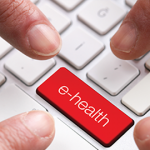 EULAR 2023—It is not enough to practice medicine by the book; rather, communication with patients and understanding their goals for patients are vital to high-quality care. At EULAR 2023, the session titled The Promise of Health Literacy in Clinical Care provided a treasure trove of insights for many clinicians.
EULAR 2023—It is not enough to practice medicine by the book; rather, communication with patients and understanding their goals for patients are vital to high-quality care. At EULAR 2023, the session titled The Promise of Health Literacy in Clinical Care provided a treasure trove of insights for many clinicians.
Definitions & Actions
The first speaker was Richard Osborne, BSc, PhD, director, Center for Global Health and Equity, and professor of health sciences, Swinburne University of Technology, Melbourne, Australia. Dr. Osborne defined health literacy and described how it can be measured.
He noted that health literacy is a way to understand an individual’s health information needs, the reasons some people struggle to look after themselves, why medication adherence and lifestyle change can be challenging, why many medical interventions are ineffective, and what the medical community needs to do to improve service quality.
A key publication on health literacy is the World Health Organization’s report Health Literacy Development for the Prevention and Control of Noncommunicable Diseases.1 It defines health literacy as “a social practice whereby decisions about health, and the available support to change to, or maintain, healthy behaviors, are determined by powerful and unique community norms and cultures, and organizational and political factors impacting communities.”
What does this mean in practical terms? Dr. Osborne explained that health literacy refers to people’s knowledge, confidence and comfort in accessing, understanding, appraising, remembering and using information about health and healthcare for their personal and family health. This does not just refer to health-related reading and writing: Dr. Osborne and colleagues have helped create a 44-question health literacy questionnaire that asks patients if they feel understood and supported by healthcare providers, have sufficient information to manage their health, can make plans for what they need to be healthy, and have the ability to find good health information.
This last topic is a double-edged sword in the internet era. On the one hand, it is easier than ever to access information from highly reputable sources, such as large academic medical centers and nonprofit health and advocacy organizations. At the same time, the promulgation of often confusing or misleading information about health and wellness seen on social media platforms, in discussion forums and gleaned from other sources can make it hard for patients to know what to believe.
With this in mind, Dr. Osborne laid out several steps to achieve success in addressing health literacy: 1) Measure a patient population’s strengths, challenges and preferences through health and electronic health (ehealth) questionnaires; 2) be responsive at the patient level: know how an individual prefers to learn, and match your care and patient education to this learning style. This also involves working effectively with patients using methods like “teach-back” and Conversational Health Literacy Assessment Tool (CHAT) questions; and 3) improve responsiveness at the organizational level by using health literacy responsiveness tools.


